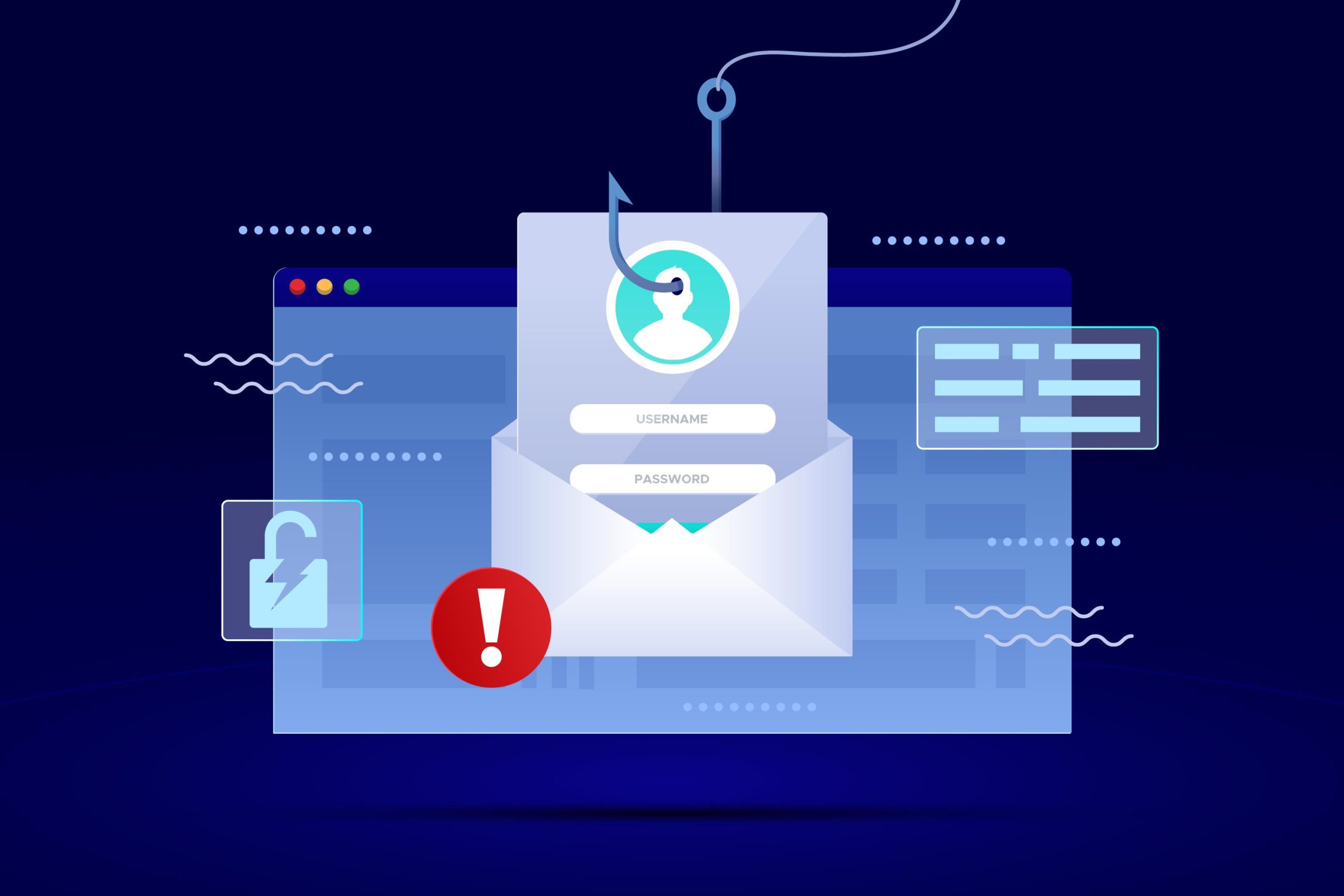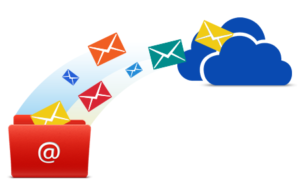You may be asking yourself a lot of questions if you’re looking for email security solutions. Protecting your company from cyberattacks, spam, phishing, and data breaches requires strong email security. But how do you pick the best email security solution that suits your requirements? What characteristics should you seek out? How do you evaluate various platforms and vendors? How can you gauge your investment’s effectiveness and return on investment of your investment in email security?
In this article, we will address some of the most frequent queries consumers have when thinking about purchasing email security solutions. We’ll also offer some advice and materials to assist you in making a selection.
What is email security, and why is it important?
Email security is the collection of procedures and technologies that guard against illegal access to, alteration of, or compromise of email messages and attachments. Email security guards against criminal actors who might try to steal valuable information pose as genuine users spread malware or ransomware, or interfere with corporate processes. It protects both the sender and the recipient of an email.
It is significant since email is one of the most popular and reliable modes of corporate communication. Over 300 billion emails were sent and received per day in 2020, and this number is projected to increase to 376 billion by 2025, according to Statista.
According to Verizon’s Data Breach Investigations Report, email is also the most common method for cyberattacks, being responsible for 94% of malware transmission and 96% of phishing instances in 2019.
Your company could suffer major repercussions if email security is inadequate, including:
1. Data loss or theft
Through email attachments or links, hackers could access your private data, including customer records, financial information, intellectual property, or trade secrets.
2. Reputation damage
If your email account is compromised and used to deliver spam or malicious messages to your contacts, your brand reputation and customer trust may suffer.
3. Violations of compliance
You risk fines or legal repercussions if you fail to secure your email correspondence in accordance with data protection regulations like GDPR, HIPAA, or PCI DSS.
4. Productivity loss
Managing spam, phishing, or malware infections that might affect the performance and morale of your staff could take time and resources.
If ransomware attacks your email system, which encrypts your files and demands payment to release them, business operations may be halted or hindered.
Factors to consider when choosing an email solutions provider
One of the most crucial factors to consider is the Email Security Solution’s Advanced Threat Prevention (ATP) capabilities. ATP stands for the capacity to recognize and thwart sophisticated and targeted assaults that infiltrate your network and steal your data via malware, viruses, spam, phishing, and other methods. Data breaches, ransomware infestations, identity theft, and other expensive effects of cyberattacks can all be avoided with ATP.
You should check for the following ATP elements in an email security solution:
Malware and virus detection
This feature checks all outgoing and incoming emails for viruses and dangerous code that might harm your systems and devices. Prior to reaching your inbox or your recipients, it should utilize a variety of detection engines and heuristics to find known and unidentified malware variants and eliminate them.
Spam filtering and phishing prevention
This tool removes spam and unsolicited emails from your inbox to save you time and space. Additionally, it must stop phishing emails that try to fool you into divulging your financial or personal information or clicking on harmful links. Advanced algorithms and machine learning should examine each email’s sender, content, context, and behavior and flag those that appear suspicious or fraudulent.
Url inspection
This function guards you against harmful URLs and attachments that could take you to hacked websites or download malware onto your devices. URL and attachment defense. Real-time URL and attachment scanning should be implemented, blocking any unsafe ones. Additionally, it must have dynamic analysis and sandboxing capabilities so that users may test the links and attachments in a secure setting and look for any signs of harmful behavior.
Other factors to consider include:
The size of your company
Different email security systems are designed to work with companies of all sizes, from small startups to global corporations. As well as how much storage space, bandwidth, and computing power you need, you should also think about how many users, domains, and devices you need to protect.
Your budget
Depending on features, functionality, and deployment options, several email security solutions have varying pricing structures.
How to Assess Your Business Requirements
Before you start looking for an email security solution, you must understand your business requirements and goals. This will help you narrow down your choices and find the solution matching your needs and expectations. Here are some aspects to consider when assessing your business requirements:
A. Identity Security Needs and Priorities
Determine your security needs and priorities as a first step.
- What are the primary email dangers you currently face or anticipate experiencing, for example?
- How frequently do you get emails with spam, phishing, malware, or ransomware?
- How much harm may these assaults do to your company?
- How secure do you feel your email security measures are right now?
- What are the deficiencies or gaps you need to fill?
You can use the answers to these queries to figure out what degree of security and functionality you require from an email security solution.
Some factors that can increase your email security risks and challenges include:
1. Your email environment’s size and complexity.
Attackers have more potential access points into your system the more email accounts, computers, servers, and networks you have.
2. The kind and importance of your email data.
Cybercriminals will find you more appealing if you save or send more sensitive or critical information over email.
3. Your staff’s level of knowledge and training.
The weakest aspect of email security is frequently the human element. Employees who are negligent or ignorant of email security best practices can put your company at risk of various dangers.
4. The cunning and tenacity of your opponents.
Cybercriminals continually modify their strategies and methods to get around email security measures and exploit weaknesses.
How often do you encounter email security incidents or breaches?
Measuring the frequency of email security events or breaches is one technique to determine your needs and priorities regarding email security. Any occurrence jeopardizing your email systems or data’s availability, confidentiality, or integrity is considered an email security incident. Unauthorized access to or disclosure of your email data constitutes an email security breach.
Tools to monitor and detect email security incidents or breaches
Email security programs or services provide you with alerts and reports in real time when your email accounts or systems engage in questionable or criminal activity.
Security information and event management (SIEM) systems compile and examine information from many sources to spot anomalies or patterns that might be signs of threats.
Incident response teams or procedures that promptly and effectively look into and address email security events or breaches.
You can pinpoint the areas where your email security posture needs to be improved and devote your resources accordingly by recording and evaluating the frequency, seriousness, and impact of email security events or breaches.
How severe are the implications of these incidents or breaches on your business operations, reputation, and finances?
Evaluating the severity of these incidents or breaches’ effects on your company’s operations, reputation, and money is a further approach to determining your email security needs and priorities. Your company may incur various direct and indirect costs due to email security incidents or breaches, including:
Data corruption or loss.
Data loss or corruption can occur as a result of email security events or breaches because of deletion, encryption, modification, or exfiltration of your email data. Your company’s efficiency, level of customer service, compliance, and competitive advantage may all be impacted by this.
Financial losses.
Money loss from theft, fraud, extortion, litigation, compensation, remediation, recovery, or downtime can come from email security events or breaches.
B. Understand the Compliance Requirements
Understanding your compliance needs is the second stage. You might be required to adhere to specific rules and standards that control email security and privacy, depending on your sector, region, and the data you manage.
For instance, you may need to comply with HIPAA, GDPR, PCI DSS, or other standards that demand encryption, data retention, audit trails, and breach notification if you deal with sensitive personal information like health records or financial data. You must locate an email security solution that complies with these regulations and aids in your efforts to stay out of trouble.
C. Budget and Scalability
The third phase entails considering your budget and scalability. How much money do you have to spend on email security? How many users and devices do you now have or anticipate having? How much bandwidth and storage space are required for email traffic? How straightforward is the email security system to set up, administer, and update? You must locate an email security solution that is affordable and scalable to your growing firm.
Types of Email Security Solutions
Once you have a clear idea of your business requirements, you can start exploring the different types of email security solutions available in the market. Email security solutions vary in features, functionalities, benefits, drawbacks, and costs. Email security technologies are created to stop, find, and address email security threats. The following are some of the most popular email security technologies:
I) Antivirus software
This software stops or deletes any malicious attachments or links after scanning incoming and outgoing emails for malware signatures or patterns.
II) Antispam software
This program scans incoming emails for spam indicators like sender reputation, content analysis, or user input and blocks or quarantines any emails it deems to be spam.
III) Anti-phishing software
It scans incoming emails for signs of phishing, such as spoof sites, dubious links, or urgent requests, and alerts users to suspect emails or blocks them altogether.
IV) Email encryption software
They use a public-key cryptography scheme to encrypt the body and attachments of outgoing emails and a private key to decrypt them for designated recipients.
V) Compliance Software
used for compliance, e-discovery, or backup purposes that archives and indexes all incoming and outgoing emails in a safe and searchable database are known as email archiving.
These security systems guard email communications and data privacy, availability, and integrity. They assist businesses in preventing data breaches, adhering to rules, and lowering the costs and risks related to email security concerns.
Conclusion
To sum up, choosing the finest email security solution for your company is not an easy undertaking. You must consider a number of things, including the size and nature of your company, the degree of protection you need, your financial situation, and the features and advantages of various email security solutions.
Your company’s ideal email security program should be able to guard your email information against theft, loss, damage, or unwanted access. Additionally, it must to be able to stop or lessen the effects of email-based risks like phishing, malware, ransomware, spoofing, and denial-of-service assaults. Using, maintaining, and working with your current email system and gadgets should also be simple.
Your productivity, reputation, and customer trust can all be improved by selecting your company’s finest email security solution. In the long term, it can also save you time and money by preventing losses or damages from email security breaches. Therefore, spending money on an email security solution that is dependable and meets your company’s demands and objectives is worthwhile.
![]()





Pingback: Cracking the Code: How to Protect Your Emails from Sneaky Security Threats » The MailSafi Blog
Pingback: 6 Reasons not to use Free Web-Based Email for Your Business
Pingback: An Easy 9 step Checklist to assess your email security.